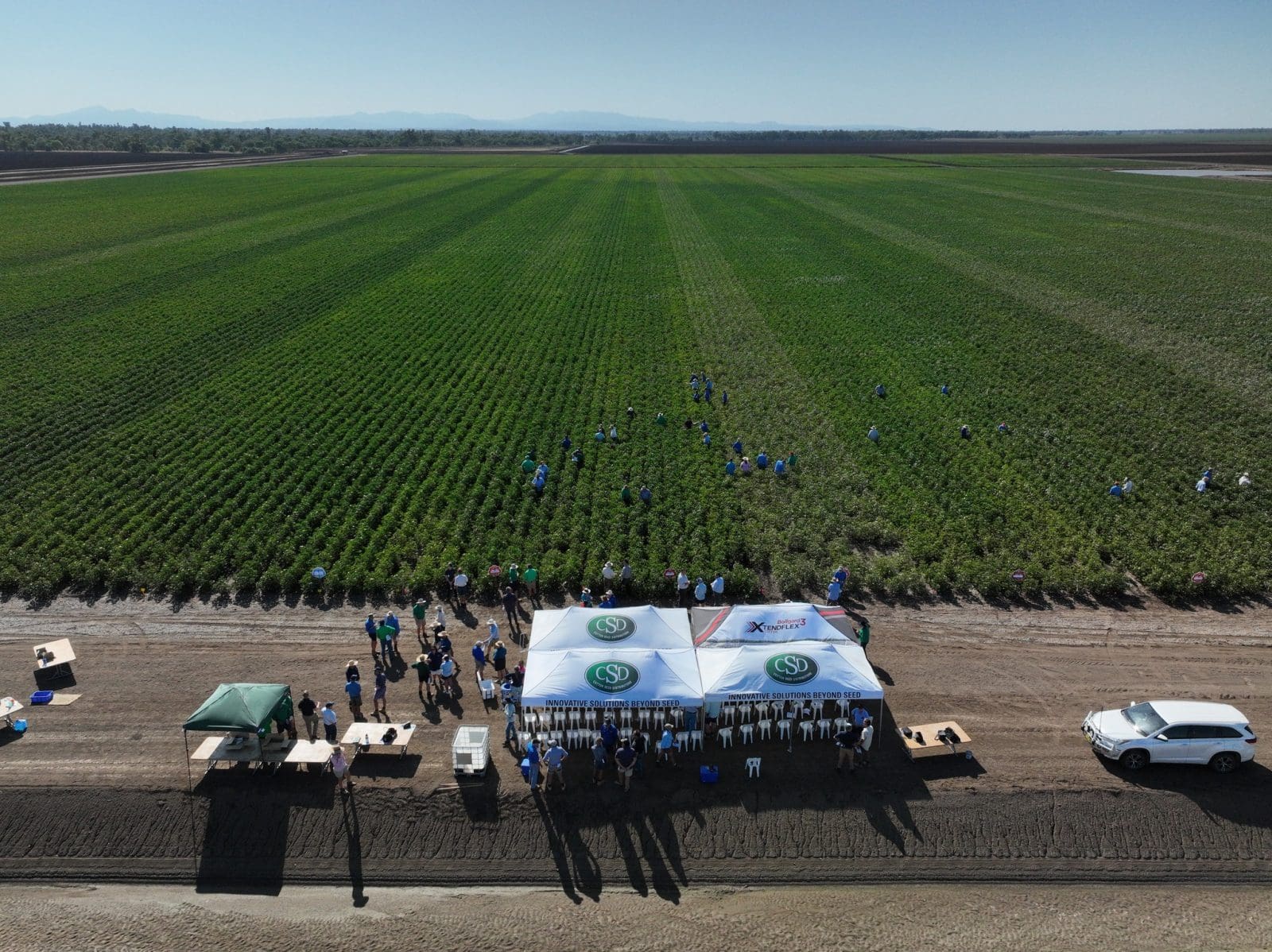
Recent rain and a good supply of irrigation water have lifted prospects for the cotton crop in NSW and Qld, including these trials in the Namoi Valley. Photo: CSD
WELL-TIMED, significant rainfall across eastern states has lifted Australia’s summer-crop production forecasts for 2023-24, according to ABARES quarterly Australian Crop Report released today.
The national forecaster is predicting summer crop production to hit 4.3 million tonnes (Mt), up 14 percent from previous estimates released in the December 2023 Australian Crop Report.
The forecast area planted to summer crops is up by 100,000ha over the quarter to 1.3 million hectares.
The production estimates are a 17pc drop on last season, but sit 22pc above above the 10-year average to 2022-23 of 3.55Mt.
Sorghum production estimates saw the largest upwards revision, with production expected to reach 2Mt tonnes up 38pc on ABARES December forecasts.
If realised, this total is 26pc above the 10-year average to 2022-23.
Thanks to late dryland plantings, cotton production is now forecast to hit 1Mt from 477,000ha.
This is a modest increase from ABARES December estimates of 925,000t production and 413,000ha area.
The estimated rice production underwent a significant downward revision from the December forecast of 700,000t, with production now expected to reach 555,000t.
Although a drop of over 20pc, the total is still 9pc higher than the 2022-23 crop.
Anticipated increase in yields and some later-sown crops from average to above-average summer rainfall has driven this uplift in production.
“Summer-crop prospects are excellent following better than expected seasonal conditions during late spring and summer in Queensland and northern New South Wales,” the report said.
“Yield prospects and production are expected to be well above average but less favourable than the previous two seasons.
“This is mainly because drier conditions during the early planting window of September and October across major dryland summer-cropping regions in Qld and northern NSW limited planting opportunities for early sown summer crops.”
The Bureau of Meteorology’s rainfall outlook for March suggests there is at least a 75pc chance of rainfall totals up to 25mm across cropping regions in NSW and Queensland.
Given the rainfall recorded across these cropping regions during summer, if realised, these forecast rainfall totals for March will provide some useful follow-up falls for dryland summer crops.
Qld drives uplift
Queensland saw the largest lift in production from the December figures, revised up by 22pc to 1.9Mt.
This result was driven by an upward shift in sorghum production, now predicted at 1.4Mt, due to a rise in late plantings and strong yields.
The state’s cotton production was revised down by 5000t to 283,000t.
Dry conditions in early spring limited dryland plantings which saw a small increase following above average rainfall in November.
Irrigated planting is slightly lower than the December forecast and likely associated with a fall in irrigation water availability, with water levels in key cropping regions across southeast Queensland being significantly lower than in the 2022-23 planting season.
Despite the combined effects of unfavourable seasonal conditions and falling water levels, Queensland’s cotton production is expected to be higher than the 10-year average.
NSW cotton boosted
Total crop production for NSW is forecast to reach 2.2Mt, a slight increase of 7pc on the December estimates, but a drop of 9pc on the 2022-23 figure.
November to January rainfall improved late-planting prospects for dryland cotton and sorghum in NSW.
Timely planting of irrigated cotton and high water storage levels in the southern Murray Darling Basin have supported a marginal increase in irrigated cotton production.
Sorghum production is forecast at 611,000t, up from the December estimate of 403,000t.
The December forecast for cotton lint production, initially set at 619,000t, was revised upward to 719,000t.
FAW impacts
ABARES noted that reports of localised damage from fall armyworm in sorghum and maize crops were causing concern for growers.
“Later sown crops planted from December onwards are most heavily impacted,” the report said.
“Higher yields in areas unaffected is likely to offset any crop losses caused by fall armyworm.”
Source: ABARES

HAVE YOUR SAY